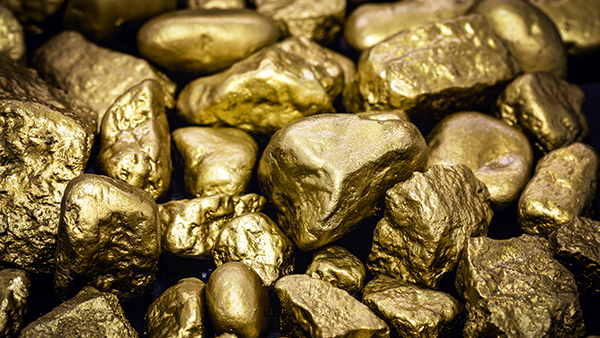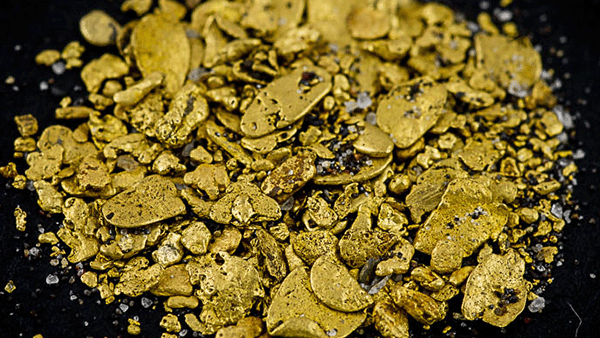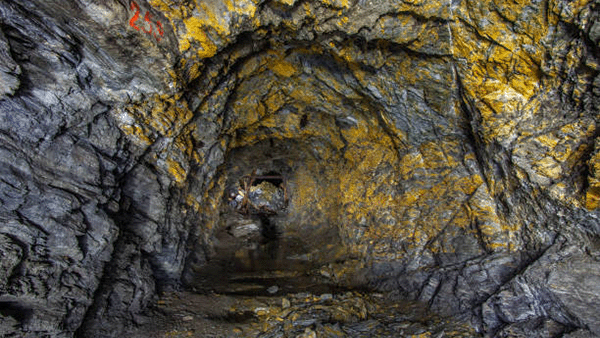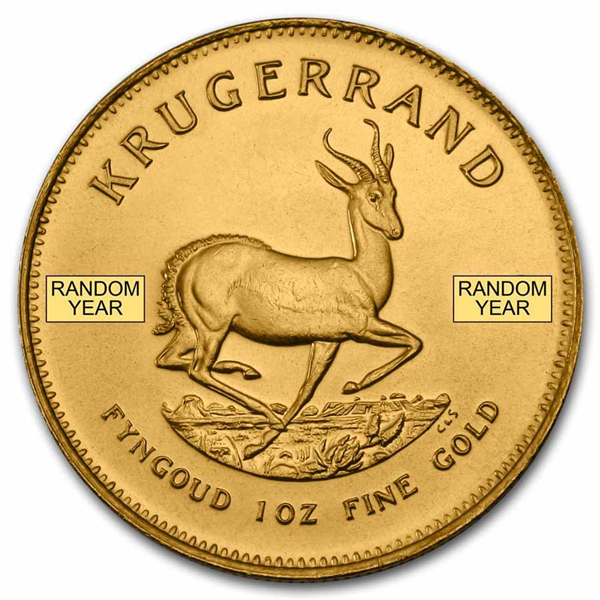How Is Gold Formed and Where Does it Come From?

Where does gold come from? Even if you manage to find the end of a rainbow, it is almost certain that you will not find a leprechaun's hidden pot of gold there.
Gold, one of Earth's precious metals, is a naturally occurring chemical element with the symbol Au on the periodic table and atomic number 79 - gold atoms have 79 protons and 118 neutrons in their nuclei.
It is a highly sought-after precious metal that humans have valued for thousands of years.
The shiny yellow metal has been money for most of humankind's history, often used as gold coins for commerce, gold jewelry for adornment, and gold bullion bars hoarded in a vault.
Gold exists in various forms, including as nuggets, flakes, and particles in gold-bearing rocks, which can be mined and processed to extract the precious metal.
Where Did Gold Come From?
Gold came from outer space. Gold is thought to have been formed during a process called nucleosynthesis, which occurs in the cores of stars. During this process, atoms of lighter elements, such as hydrogen and helium, are fused together to form heavier elements, including gold.
When a star reaches the end of its life, it may explode in a supernova, releasing all of its elements, including gold, into space. These elements can then be incorporated into new stars and planets, including the Earth.
Therefore, the gold deposits on Earth's surface were not produced in Earth's molten core and pushed to Earth's crust.
How Did Gold Arrive on Earth?
As stars explode and die and heavy elements like gold are released into space. Scientists believe that planets are created through a process called accretion, which refers to the gradual accumulation of matter, including gold, in the early solar system that eventually formed the Earth.
Another way gold arrived on Earth was via asteroids bombarding the planet over its long history. This bombardment caused most of the gold to sink into the Earth's molten core during the planet's formation.
How Are Different Gold Deposits Formed?
Gold is then brought closer to the Earth's surface by molten lava, volcanic eruptions, earthquakes, and water. It is estimated that around a million tons of gold are in the top kilometer of our earth's surface.
Gold deposits can be formed in a variety of ways, depending on the geological processes and conditions that were present when they were formed. Some of the most common types of gold deposits include:
-
Vein deposits: These are formed when gold-bearing hot fluids are forced into cracks and fissures in rock formations. As the fluids cool, the gold crystallizes and accumulates in the veins.
-
Placer deposits: These are formed when gold is eroded from its source rock and carried downstream by rivers and streams. The gold settles in areas of low velocity, such as bends in the river or the bottom of the stream, where it can be extracted through panning or dredging.
Alluvial gold is one of the most common types of placer deposits and is an important source of gold for small-scale and artisanal mining operations around the world.

Alluvial gold -
Witwatersrand-type deposits: These are found in ancient sedimentary rocks and are thought to have been formed by the deposition of gold particles in a shallow marine environment over millions of years.
-
Carlin-type deposits: These are found in sedimentary rock formations and are believed to have been formed by the reaction of gold-bearing fluids with carbonate rocks.
-
Orogenic deposits: These are formed when gold-bearing fluids are injected into fault zones in mountainous regions. The fluids are often associated with magma and can be forced into rocks under high pressure and temperature.
Why is Gold a Precious Metal?
Precious metals are a group of metallic elements that are rare, naturally occurring, and have high economic value due to their rarity and special properties. Gold, silver, platinum, and palladium are the most commonly recognized precious metals.
Gold is considered a precious metal for several reasons, including its rarity, durability, and beauty. These factors have contributed to its long history of use as a medium of exchange, a store of value, and a symbol of wealth and status.
Firstly, gold is relatively rare in the Earth's crust, making up only about 0.004 parts per million by weight. This rarity has made it a highly coveted and valuable commodity throughout human history. Its scarcity also means that it is difficult to mine and produce, which contributes to its high cost and exclusivity.
Secondly, gold is highly durable and resistant to corrosion, rust, and tarnishing. Unlike many other metals, gold does not react with oxygen, water, or other elements in the environment, which means that it can remain in its original form for thousands of years. This durability has made it a popular choice for jewelry, coins, and other decorative objects throughout history. Many alloys of gold are used in jewelry-making and other applications, often mixed with base metals such as copper or nickel to create alloys that are more durable and affordable than pure gold.
Finally, gold is widely considered to be one of the most beautiful metals, with its distinctive yellow color and lustrous shine. Its aesthetic appeal has made it a popular choice for jewelry and other decorative items, as well as for use in art and architecture.
How Much Gold Has Been Mined?

A gold mine
The total amount of gold that has been mined throughout history is difficult to determine for a number of reasons. One of the main challenges in estimating the amount of gold that has been mined is that much of the gold that has been produced throughout history has been lost or destroyed over time. This includes gold that was used in ancient jewelry, coins, and other artifacts that have been lost, stolen, or melted down for other purposes.
Another challenge in estimating the amount of gold that has been mined is that not all mining and production activities have been recorded or accounted for. This is particularly true for small-scale and artisanal mining activities that take place in remote or inaccessible areas, which official records or statistics may not capture.
According to the World Gold Council, as of the end of 2021, a total of approximately 197,576 tonnes of gold has been mined throughout human history. Whether the remaining gold can be mined is unknown since prospecting gold is highly risky, and mining is often costly - requiring substantial investment, energy, and successfully navigating strict environmental regulations.
Can Gold Be Created?
The history of attempts to create gold through alchemy dates back to ancient times, with references to the practice found in texts from ancient Greece, Egypt, and China.
In these early traditions, alchemists believed that by combining various substances and performing complex rituals, they could transmute base metals such as lead or copper into gold and create a substance called the philosopher's stone that was believed to confer eternal life.
Despite centuries of effort and experimentation, however, alchemists could never successfully create gold through these methods, and the practice eventually fell out of favor as modern chemistry and physics developed.
Today, the transmutation of elements is understood to be extremely difficult. It requires extreme conditions such as those found in nuclear reactors or particle accelerators, making it impractical for most purposes.
Instead, gold is typically obtained through mining or recycling existing sources of the metal.
Interesting Facts About Gold
-
The word "gold" comes from the Old English word "geolu," which means yellow.
-
The chemical symbol for gold, Au, comes from the Latin word "aurum," which means "shining dawn" or "glow of sunrise." The symbol was derived from the first letter of the Latin word "aurum," which was later adopted as the chemical symbol for gold.
-
One ounce of pure gold could be hammered into a single sheet of nine square meters.
-
One ounce of gold can be theoretically stretched to a length of 50 miles without breaking; the resulting wire would be just five microns wide.
-
Gold is not toxic and has been used for decorative purposes in food and drinks, particularly in luxury and high-end cuisine. Edible gold leaf, which is made by hammering pure gold into thin sheets, is sometimes used as a garnish or decoration on desserts, chocolates, and other dishes.
- Over 90 percent of the world’s known gold supply has been mined since the California Gold Rush.
-
All the gold ever mined in human history could fit into a cube with sides measuring about 21 meters (69 feet) on each side.
-
The largest gold nugget ever found was discovered in Australia in 1869 and weighed over 200 pounds (92 kilograms).
-
The purity of gold is measured in karats, with 24 karat gold being pure gold and lower karat values indicating a mixture of gold and other metals.
-
The amount of gold in an Olympic gold medal is relatively small, usually less than 1% of the total weight of the gold medal. Each gold medal has a minimum of 6 grams of gold plating over 92.5% silver, with the total weight of the medal being approximately 500 grams.
-
The phrase "gold standard" has become synonymous with excellence and reliability, reflecting the high value and universal acceptance of gold as a standard of quality and value in various fields, from finance and economics to sports and entertainment.
Popular Gold Coins From Around the World
-
American Eagle Gold Coin
-
Austrian Philharmonic Gold Coin
-
American Buffalo Gold Coin
-
Chinese Panda Gold Coin


Krugerrand gold coin
Now you know where did gold come from! Remember the fascinating cosmic nature of gold the next time you hold a gold coin or bar in your hand!
